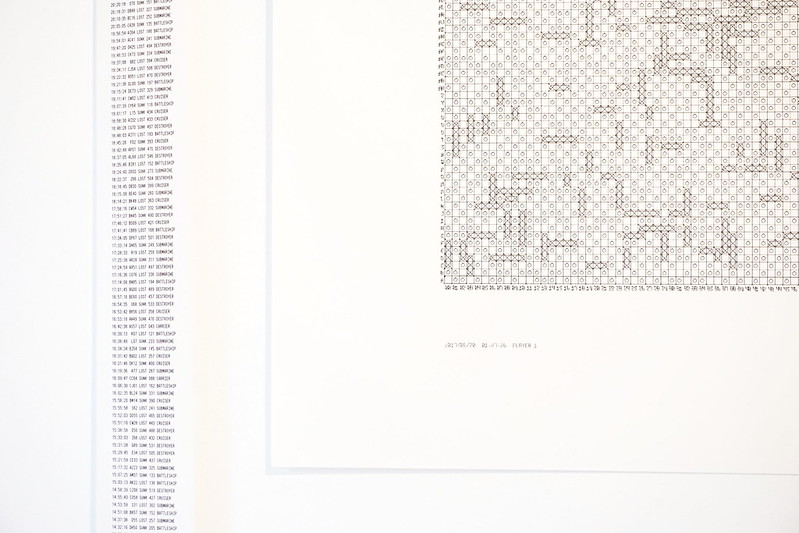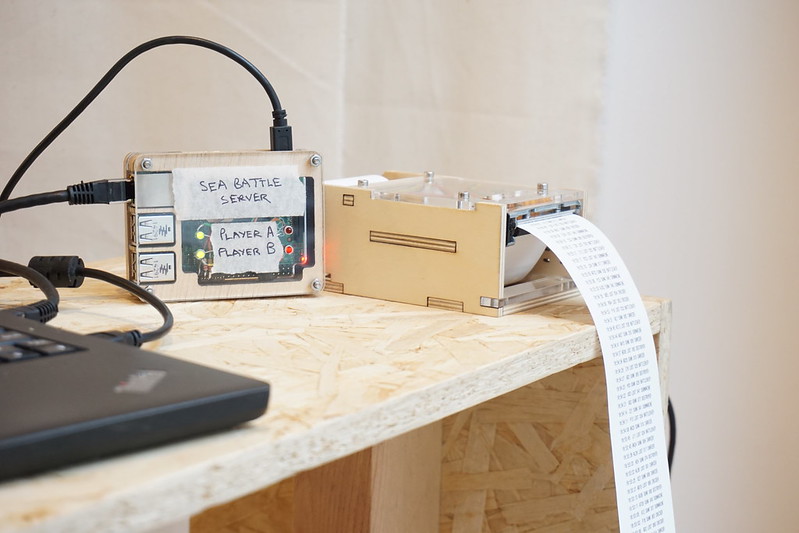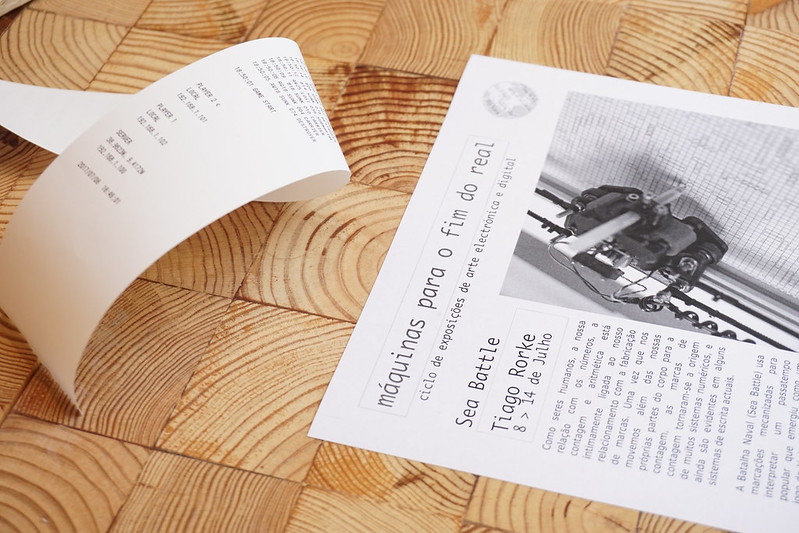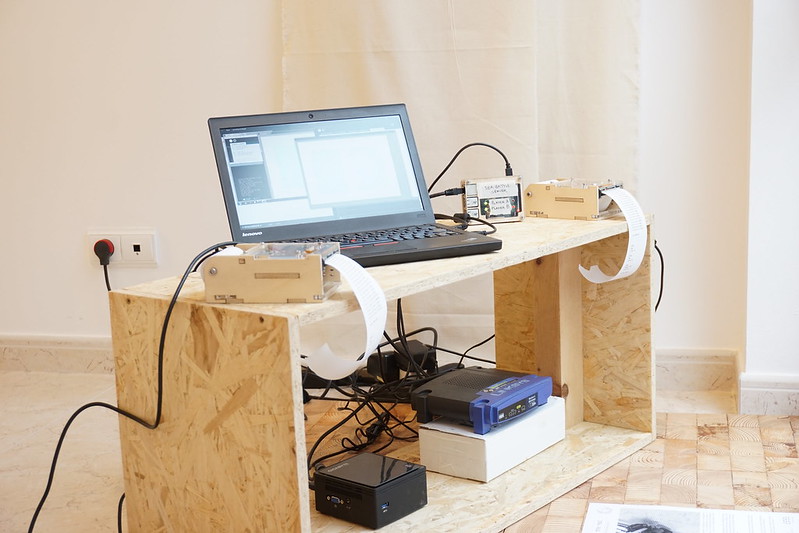machines to end the real | Sea Battle | Tiago Rorke

machines to end the real | Sea Battle | Tiago Rorke
Published on July 08, 2017 by artecódigo
machines to end the real electronic and digital arts exhibition cycle tiago rorke
2 min READ
As humans our relationship with numbers, counting, and arithmetic, is closely linked to our relationship with mark‐making. Once we moved beyond our own body parts for counting, tally marks became the origin of many numeral systems, and are still evident in some present day writing systems.
machines to end the real
electronic and digital arts exhibition cycle
Sea Battle > Tiago Rorke

Sea Battle uses mechanised mark‐making to interpret a popular pastime that emerged as a pencil and paper game in the early 20th century. By recreating the game at a scale where it is emphasised as an intercourse between machines and not between humans, the mechanical nature of the game is made more apparent, highlighting its computational qualities. This installation is not just a simulation however, but a performance that seeks to anthropomorphise the two machines within the context of the game. The drawing machines themselves are a representation of the simulation running invisibly in code, and it is the physical speed of the machines that determines the duration of each game.The installation consists of two computers running the Sea Battle application, each controlling a plotter. As in the traditional game, for each turn the application analyses the state of the game, chooses a new target and sends this request to the other machine via the Sea Battle server. After receiving a response it sends these drawing commands to the plotter, along with its opponent’s move, and the game continues. The simulation generates procedurally, such that every game is unique.
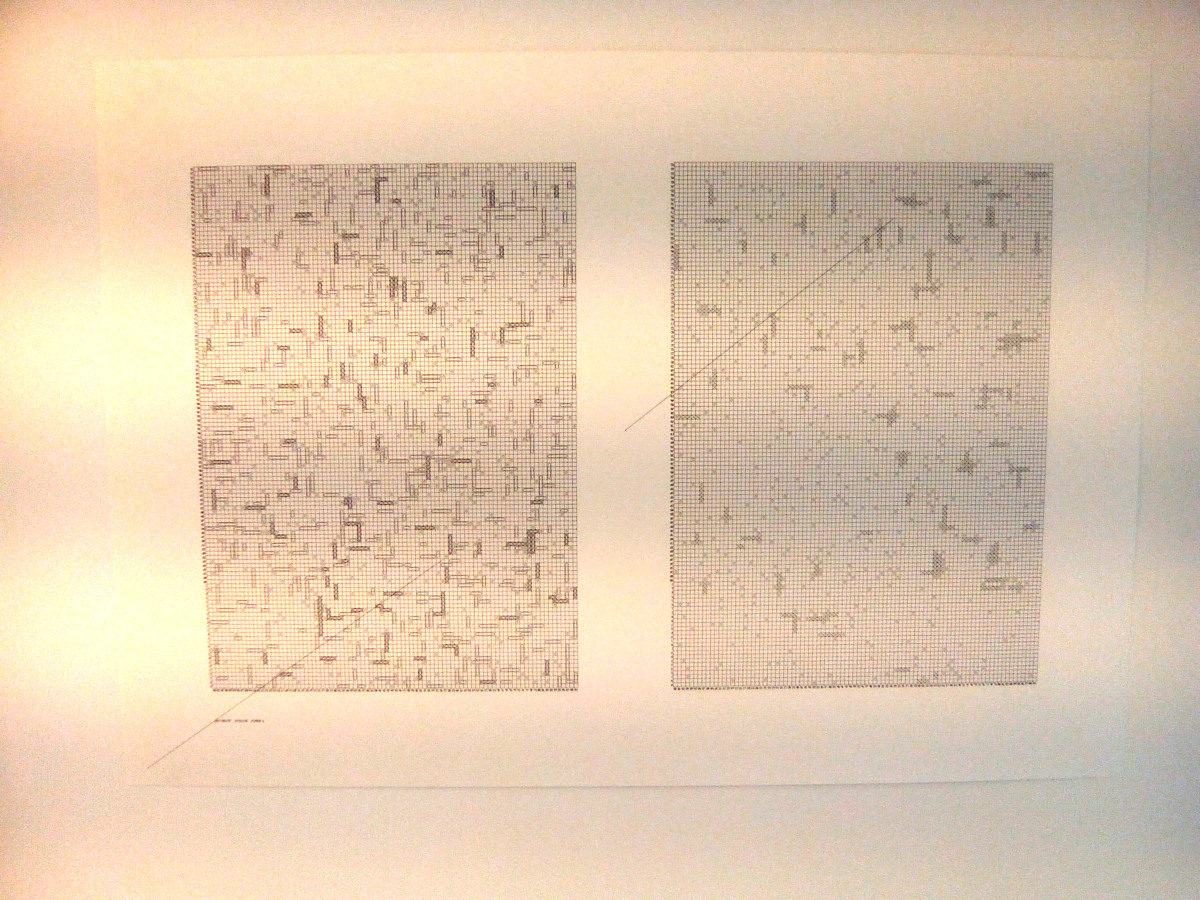
From his experience as a designer, artist and researcher Tiago Rorke is usually immersed in prototyping and physical computing, tools and details. His work ranges from tools for making and teaching, to devices and experiences that interrogate our everyday relationships with technology. Born and raised in Wellington, New Zealand, Tiago studied industrial design at the Victoria University of Wellington School of Design, and is an alum of the Computational Design Lab at Carnegie Mellon University, Pittsburgh PA. Formally a co-founder of Diatom, a London-based studio building collaborative and open-source design tools, Tiago is now a freelance designer working between hardware and software, and living in Lisbon, Portugal. https://tiago.nz.
